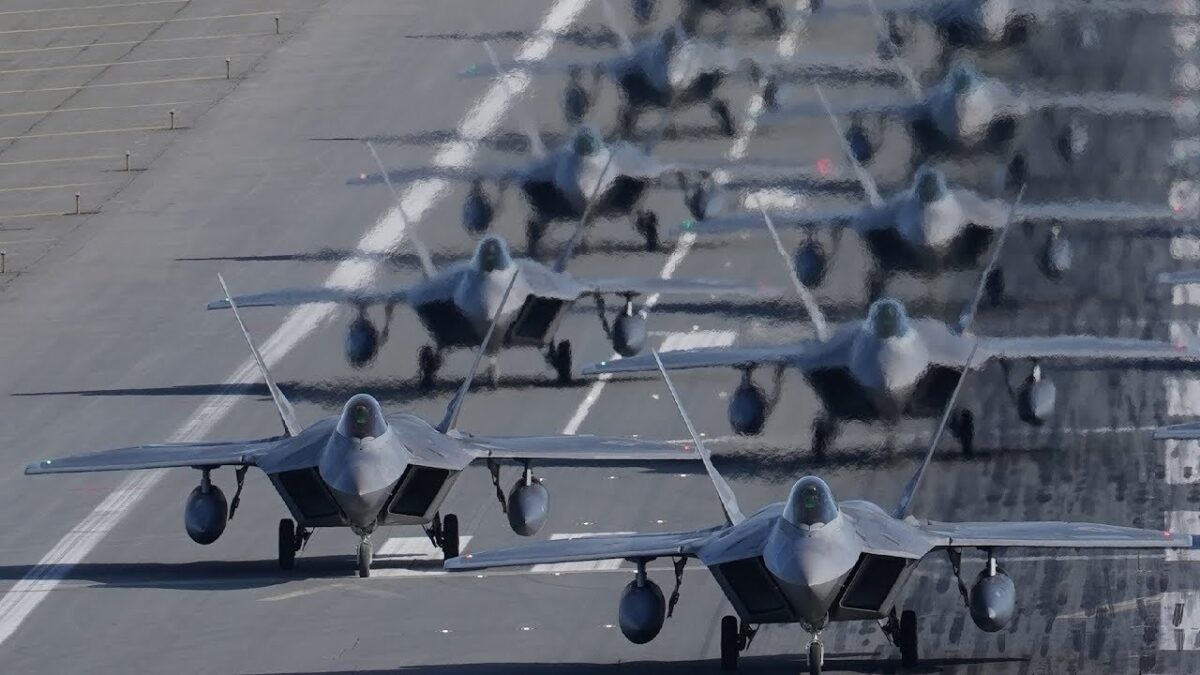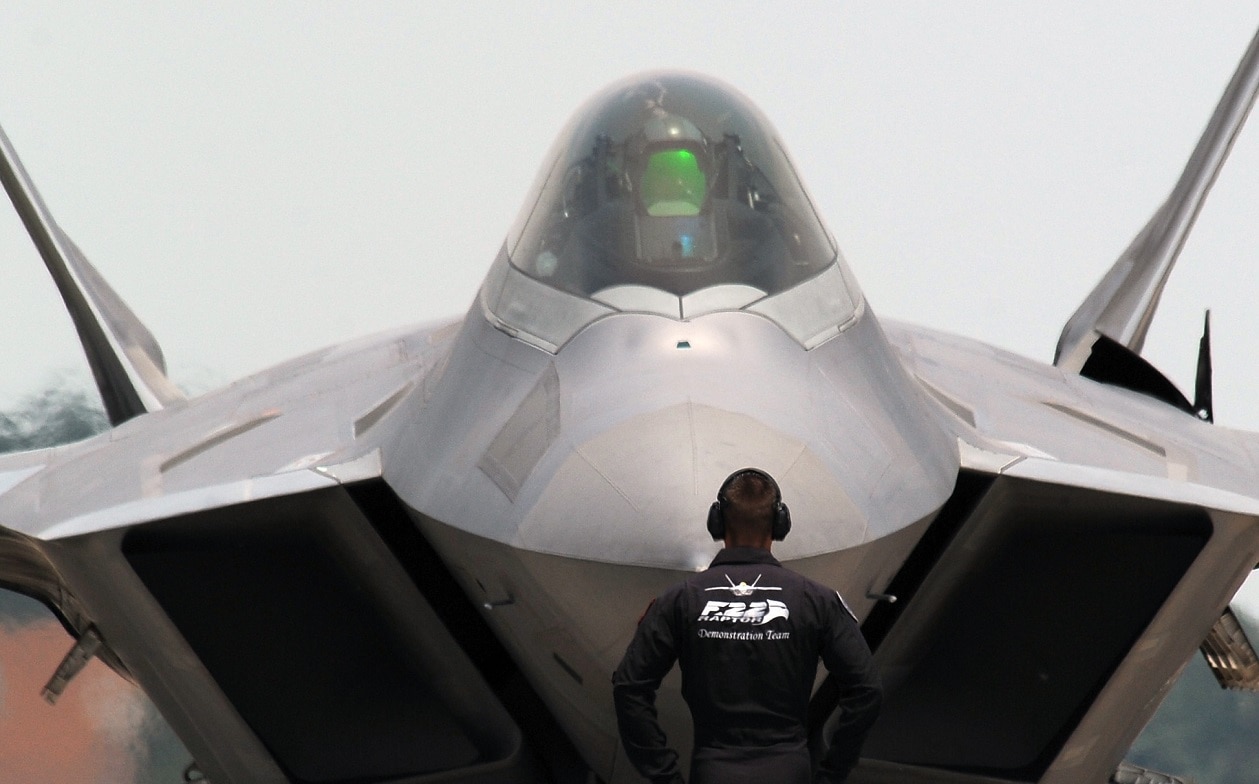F-22 Stealth Fighters and a No-Fly Zone Over Ukraine? – Could the F-22 Raptor be part of a no-fly zone over Ukraine?
Two Ukrainian members of parliament are asking NATO to execute and enforce a no-fly zone over Ukraine to stifle Russian fighters that have achieved air superiority. F-22s have a history of serving in Europe having been deployed there in 2015, 2016, and 2018 to train with NATO partners. The Raptors could join F-35s that have already been re-deployed from Germany to Eastern Europe. But would there ever be a no-fly zone in the first place?
Ukrainian Politicians Call for No-Fly Zone
Kira Rudik, in charge of Ukraine’s Holos political party, and Ivanaa Klympush, representing the European Solidarity party have called for a no-fly zone, pointing out that financial sanctions alone will not work against the Russians. In Britain, a handful of Conservative Members of Parliament have called for NATO air support in Ukraine and even a no-fly zone. The chair of the Commons Defence Committee, MP Tobias Ellwood, is in favor of the tactic.
NATO Did It Over Libya
NATO conducted a no-fly zone over Libya in 2011 as part of Operation Unified Protector. A no-fly zone over Ukraine would be risky and certainly would involve combat with Russian warplanes.
No-Fly Zone Would Be Act of War
That’s why UK’s defense minister Ben Wallace is against a no-fly zone. He is worried about such a drastic step that would place British pilots in danger of being shot down. It’s an act of war, according to Wallace, and NATO would have to declare war on Russia for this to happen, which is not likely.
The U.S. Is Limiting Flights Over Ukraine
If the United States took such a move to assist Ukraine in the air, a joint force of F-22s and F-35s would arguably be the best fighters in the world going up against the Russians. Currently, no American commercial airplanes are allowed to fly over Ukraine. The United States is sending recon drones such as the RQ-4 Global Hawk to collect imagery and intelligence over the battlefields in Ukraine.
President Joe Biden has repeatedly stated that no Americans would be involved in the war in Ukraine. The Russians would almost assuredly fight back if a no-fly zone was instituted by the Americans and NATO.

The F-22 Could Rise to the Challenge of Enforcing a No-fly Zone
The F-22, along with the F-35, is America’s prime fighter. The $370 million 5th-generation stealth warplane is about air superiority, and it is one of the only stealth fighters flying today. The Raptor can launch six AIM-120 AMRAAMs and two AIM-9 Sidewinders. It can fly faster than MACH 1.5 on supercruise without an afterburner. This helps it conserve fuel.
The F-22 is hard to track due to its stealthiness and would outclass the Su-35 that Russia is depending on to patrol the skies over Ukraine. The Raptor would likely be the only adversarial stealth fighter in the air (should it be called on to police a no-fly zone) as the Russians are not expected to fly their own stealth fighter, the Su-57, over Ukraine.
Even though some politicians are calling for a no-fly zone to aid the Ukrainians against the Russians, it is likely that NATO and especially, the United States and the United Kingdom, are not willing to select that option.

F-22. Image Credit: Creative Commons.
The only scenario that could lend itself to some form of aerial confrontation that could lead to a dog fight would be if Russian airplanes stray into NATO members’ air space. This would mean that NATO fighters could engage the Russians and escort them back to Ukrainian (or Russian) air space. Obviously, mistakes, miscalculations, and accidents could happen that would jeopardize NATO fighters, but a NATO no-fly zone with F-22s is not likely at this point.
Now serving as 1945’s Defense and National Security Editor, Brent M. Eastwood, Ph.D., is the author of Humans, Machines, and Data: Future Trends in Warfare. He is an Emerging Threats expert and former U.S. Army Infantry officer. You can follow him on Twitter @BMEastwood.

